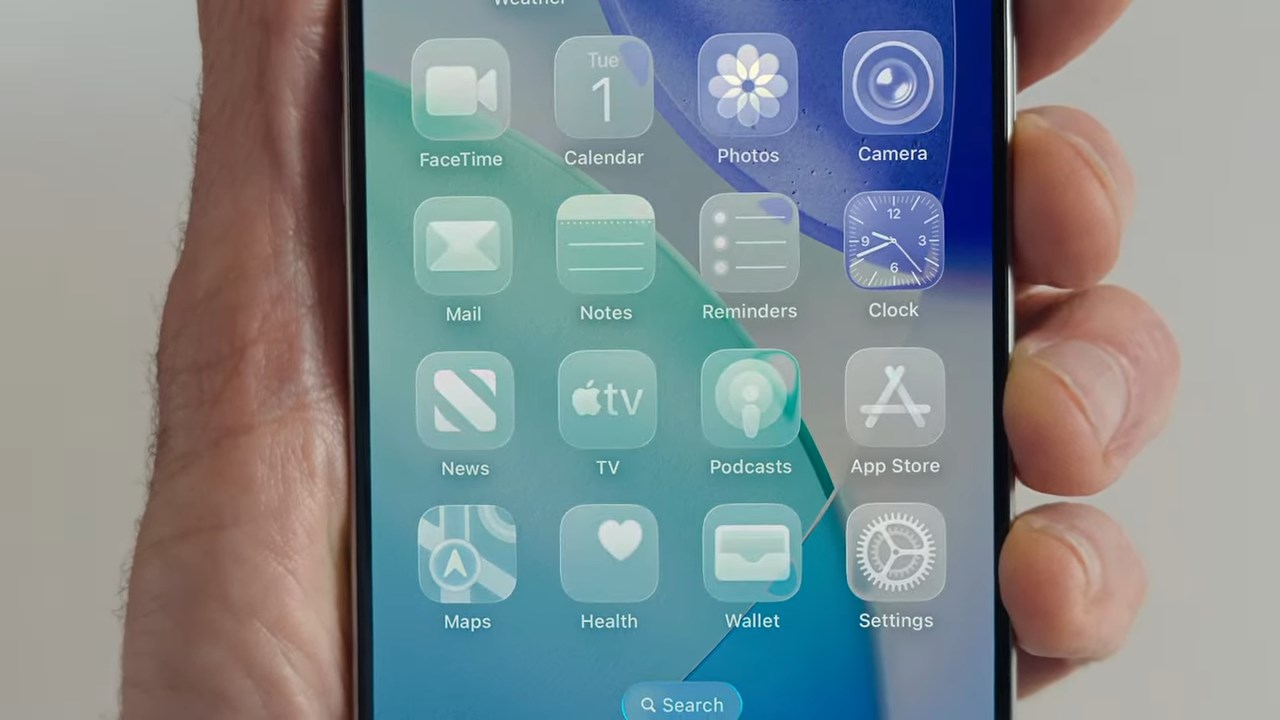
At WWDC 2025, Apple introduced a major user interface redesign called Liquid Glass, which brings a shiny, reflective, and transparent aesthetic across its software platforms. This “glassy” look is inspired by Apple’s Vision Pro VR headset and aims to unify the design language across iPhones, iPads, Macs, Apple Watches, and Apple TVs.
The Liquid Glass interface hints at a future where Apple’s operating systems may extend beyond traditional devices, potentially adapting to new surfaces such as augmented reality glasses.
Liquid Glass marks the biggest visual update to iOS since the shift from skeuomorphic design—real-world textures and objects like the yellow legal pad in the Notes app—to flat design in iOS 7. Over time, the flat design evolved with semi-translucent layers, such as frosted-glass Control Centers.
Apple’s vice president of design, Alan Dye, described Liquid Glass as incorporating “optical qualities of glass and a fluidity that only Apple can achieve.” The update brings dynamic light refraction, clarity in navigation, and real-time responsiveness to content and user input, creating a more lively and immersive experience.
Features Across the System and Apps
The translucent Liquid Glass effect adapts screen colors based on content and ambient light, smoothly shifting between light and dark modes. Alerts animate from the point of user interaction, and context menus expand fluidly for easier scanning.
The redesign covers core system interfaces like the Lock Screen, Notifications, and Control Center, as well as app icons, which now appear as layered liquid glass in light, dark, and new clear modes.
On the Lock Screen, the time is displayed in a glassy San Francisco typeface that dynamically changes weight and size depending on the background image. The iPhone can also turn 2D photos into spatial scenes with 3D effects, complementing the glass-like UI.
In Apple Music, player controls adopt the Liquid Glass style, showcasing new artist-provided animations that enhance playback. Similar visual updates extend to FaceTime, Safari’s tab bar, and various controls.
Liquid Glass will debut not only in iOS 26 for the iPhone but also in iPadOS 26, macOS Tahoe 26, watchOS 26, and tvOS 26. Developers will have access to new Liquid Glass materials through SwiftUI, UIKit, and AppKit frameworks, along with dedicated APIs to integrate these effects into their apps.
What The Author Thinks
Apple’s Liquid Glass redesign blends beauty with function, reflecting a maturation of UI aesthetics that balances style with usability. By embracing translucency and dynamic responsiveness, Apple is creating interfaces that feel alive and context-aware, signaling a step forward in making technology more immersive without overwhelming the user. This approach also cleverly bridges hardware and software, foreshadowing seamless integration across devices and potentially new platforms like AR glasses.
Featured image credit: DonanimHaber
For more stories like it, click the +Follow button at the top of this page to follow us.
